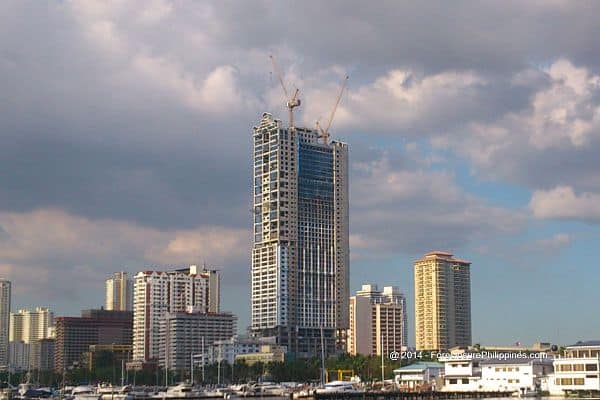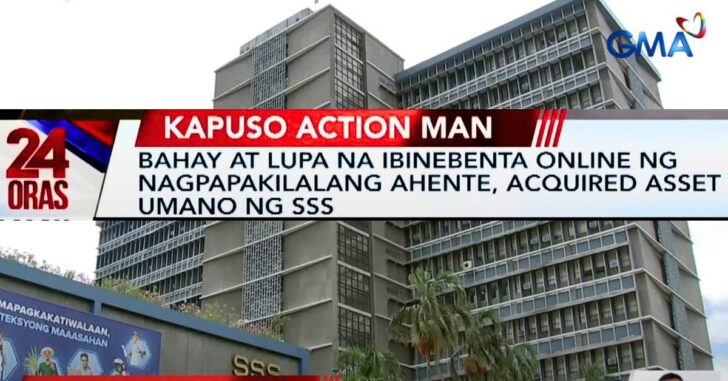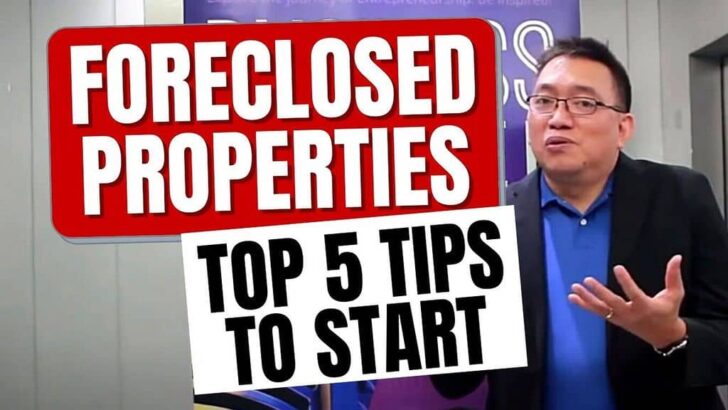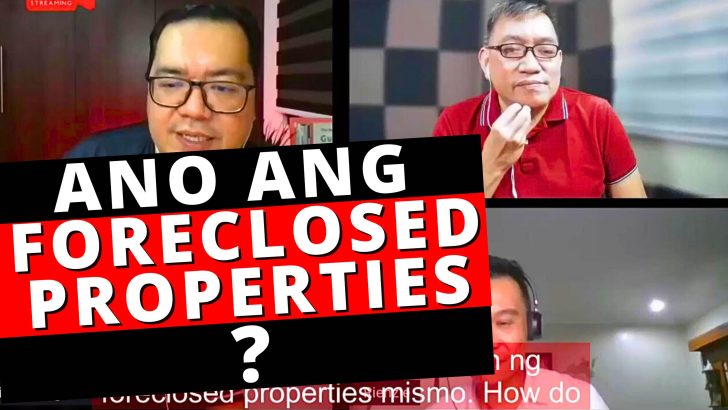I was reviewing my December 28, 2012 Philippine Property Outlook 2013 post since it’s high time for it to be updates, since half of 2013 has already whizzed by. The observations of Mr. Ian Mariano, as elaborated in his article, are gems which serve as food for thought for all.
As we always say, real estate is cyclical and all types of investing involves risk, so investors must enter with open eyes and be aware of the possibility of winning or losing. Let’s take a look once again at the property sector at present.
Philippine performance in general
As predicted, the Philippines got its aspired-for investment grade in the first half of 2013 – from three credit rating agencies, no less – Fitch last March 27, 2013, Standard & Poor’s last May 2, 2013, and the Japan Credit Rating Agency last May 7, 2013. Moody’s officials are expected to arrive this July so there are hints of a ratings upgrade from their part as well.
For the first quarter of 2013, it was reported that the Philippines grew by 7.8%, outperforming China and the rest of Asia. There are people saying, though, that this was fueled in part by massive election spending.
Colliers, a real estate consultancy firm, still has a positive outlook on real estate as discussed in their Philippine Real Estate Market Research and Forecast Report for the 1st Quarter of 2013. Jones Lang LaSalle, another real estate consultancy firm, is still upbeat based on its Philippine Property Market Monitor for March 2013. Wilson Lee Flores of The Philippine Star also had an interview with David Leechiu, country head of Jones Lang LaSalle (not so new – July 16, 2012) and the interview was very upbeat.
What about the negative side?
I am normally a positive person, but at the same time I want to always have a balanced view, so I am curious about the negative side of real estate since there is not much written about it. The correction in the stock market once again triggered thoughts about a possible real estate downturn and when it will occur. Ian has written about this very persuasively in his post which shows that the stock market is close to becoming a bear market. I would like to share my recent thoughts on this topic.
We have attended seminars last May and early June and I have digested the ideas of great minds, most notably Hon. Rodolfo G. Valencia (also known as RGV), the father of the RESA Law.
RGV’s thoughts
RGV spoke at the Manila Real Estate Forum 2013 and his insights are invaluable. I took copious notes which I will discuss at length in a separate post. For this post, I will share that he believes that real estate will slow down, and he estimates it to be sometime in 2016. He believes that the low-cost and socio-economic housing sectors will continue to flourish because that is really where the housing backlog is.
I think many people are thinking of 2016 as the turning point as well (including me), since nobody really knows for sure if the next administration will be able to maintain the country’s current standing.
Mr. Alleje’s thoughts
Mr. Alleje, for his part, shared his excellent analysis of the real estate sector in relation to foreclosed properties in his seminar, “Learn How to Make Millions in Foreclosures” (again, I took copious notes which I will discuss at length later). His idea is that the turnover of thousands of condo units will occur from 2013 to 2016, and many of the buyers will be getting loans from banks very soon, and it is possible that many will be unable to pay – resulting in more foreclosed properties.
So the timeline for the downturn for him is sooner than 2016.
[By the way, Mr. Alleje will be holding the seminar “Learn How to Make Millions in Foreclosures” in Singapore. It will be held on July 6, 2013, from 2:00-4:00pm at the Philippine Bayanihan Society, Bayanihan Center, 43 Pasir Panjang Road, Singapore 118503. Click on this link for details. Pre-registered rate is SGD10 only.]
Putting it all together
Those who bought units because of the low downpayment spread over many months, but whose incomes are not really able to cover the amortizations for the balance may get hit. After all, the lower the downpayment, the bigger the balance and consequently, the bigger the monthly amortization. Either they will get in-house financing where the interest rate is very high, or they will have to let go of the downpayment they have already paid (maybe get part of it back as per Maceda Law) and the developer will sell the property to another buyer. This possibility was discussed by our good friend Mr. Jun Sanchez in his post which I all shared in the comments section of my December 2012 article. If a buyer is not really able to pay for the amortizations from his income sources alone, without banking on rental income once the unit is turned over (nobody knows if the units will be rented out consistently, and, if so, how much would the rent be?), there may be a problem.
The capability of a person to pay the amortization is due to their income sources, and the data released last April 2013 by the National Statistics Office (NSO) may give a clue – unemployment rate is 7.5% while underemployment rate is 19.2%. Another clue is the latest data from the NSO which reports that in the 2009 Family Income and Expenditure Survey (FIES), the average Filipino family earned P206,000 yearly. Combine these with the latest census data which shows that the population of the Philippines as 92.34 million as of 2010, and all need housing, the conclusion that the backlog is in low-cost and socio-economic housing seems to be properly supported.
Anyway, if you can pay for your rental property, those who are unable to pay may lose their homes but they still need a roof over their heads so the rental market can still be good.
What about the OFW market?
I have a new friend from whom I got new insights about the Overseas Filipino Worker (OFW) market. I learned that condo investments are marketed as forced savings, and anyway, the units will be earning when they are rented out. This is the usual spiel of sellers for real estate investments. However, since a huge percentage (around 60%?) of the condo complex will be sold to OFW’s who will not be living in the premises (since they already have their families with them abroad) and will only be renting them out, what will happen if 60% of the units are rented out? I don’t think the leasing department will be able to lease out all, some will naturally be prioritized over the others – and mostly it will be because of price considerations. A price war will drive rents lower and everybody loses. Many are able to pay the amortizations easily, though, so it is those people who will be able to survive a possible downturn.
I have also noticed that there are many OFW’s who bought units from sellers (I noticed a lot are from a certain developer) based on the hope of capital appreciation, the belief that they would be able to sell the units at a much higher price come turnover time. However, before or upon turnover, either the sellers are no longer connected to the company, or they say that they are still selling other units in the same or other buildings and thus may not be able to sell the units for their buyers. End result: buyers try to sell the property themselves, look for someone to sell for them here, or sell at rock-bottom price just to get back their investment, etc. The promises of the sellers are broken, buyers are left with an empty bag.
What about interest rates? Will they rise soon?
This is quite tricky. Like many, I used to say probably in 2016 – tied with the change in administration, and in part because the real estate boom has been present for quite some time and is bound to slow down.
I have been researching on this since interest rates are crucial for real estate investors. Monthly amortizations are dependent on interest rates. If the loan is over a number of years but the interest rate is not fixed, and if the interest rate increases sharply, it is possible that the monthly amortizations will increase to a level which the investor will not be able to repay.
For now, the lowest interest rate I have seen is 5.25% from PNB fixed for one year, subject to repricing. The lowest long-term fixed interest rate I’ve seen is 9.25% for 25 years under PSBank. A low interest rate during the first few years of a loan is good for the borrower because amortizations for the first years of a loan are comprised more of interest expense rather than principal payments. However, if interest rates are not fixed, the borrower is not protected from interest rate increases.
BSP Monetary Policy
I had no choice but to study Bangko Sentral ng Pilipinas (BSP) Monetary Policy in order to have a semblance of understanding of interest rates. What’s difficult is that there are several factors that come into play, both internal and external. The BSP has the job of balancing all these forces to control the economy.
There was a scheduled Monetary Board meeting last June 13, but the highlights of the meeting are not yet posted in the BSP website. There are news reports though that the BSP has decided to keep the current policy rates. Here is a video of a Bloomberg TV’s Rishaad Salamat with BSP Governor Amando Tetangco last June 14, one day after the Monetary Board meeting:
If you can’t see the video above, you can also watch through this link: http://bloom.bg/14zVGKj
The BSP Monetary Board’s framework in conducting monetary policy is inflation targeting. Basically, they want to control inflation and therefore price stability, in order for businesses and the economy to thrive. Their ways of maintaining the inflation rate is to influence money supply and control interest rates.
Based on my understanding of what he said, the BSP has decided to maintain the rates at present since inflation is still ok (target is 3-5% and actual for May 2013 is only 2.6%), and they are still waiting for the full effects of the fine-tuning of the rules on special deposit accounts (SDA’s) and non-deliverable forwards (NDF’s) which has added to the money supply in the market, to the tune of around P.131 trillion and $6 billion, respectively. In other words, since the money from SDA’s and NDF’s have to be removed from the BSP, there is a lot of money that needs to be invested somewhere. This money will help fuel the economy.
My understanding is that when there is too much money supply, inflation will be higher. Aside from the money supply coming from the BSP from NDF’s and SDA’s, we also have OFW remittances and payments for BPO companies (among others). Perhaps these have balanced the money pulled out of the country due to signs of recovery from the US.
Considering the many variable factors, the BSP revised its inflation forecast for 2014 to 3.6%. Last May 2013, the inflation was 2.6%. The inflation target for 2013-2015 is 3 to 5%. The BSP will use its tools to achieve the inflation target. So, we need to be alert as well, as an upward change in inflation may adversely affect our purchasing power. Translation: the money we have may not be able to purchase the same things (even real estate) which we were able to purchase prior to the increase in inflation rate.
Interest Rates
With regard to interest rates, Mr. Tetangco stated (as written in the Business Mirror), that:
“We have scope to further ease,” Tetangco said on Friday in an interview with Rishaad Salamat on Bloomberg Television. “The benign inflation outlook gives us room to further support growth if this proves to be needed. That said, we’re also mindful of financial-stability implications of keeping interest rates very low for an extended period of time.”
My decoding of his cryptic language is that they cannot keep interest rates very low for too long as it may have an adverse effect on the economy as well. Indeed, if money has been pulled out because it may earn higher interest elsewhere in the world, increasing interest rates here to compete with them may be a possibility. Coupled with the increase in inflation forecast, we may need to be alert for possible interest rate increases.
To reiterate, an increase in interest rates may adversely affect investors who do not have fixed interest rates. An unexpected increase in amortization may force them to be in default.
Foreign exchange rate
With regard to the foreign exchange rate, Mr. Tetangco said that they have no target exchange rate, but they want it to be stable enough so that “businesses can plan.”
The Philippine economy is buoyed by OFW remittances and incomes of BPO companies. When the peso is too strong, it lowers the purchasing power of the families of OFW’s and BPO employees, which in turn may possibly make them have a harder time paying real estate purchases (if they had over-extended themselves). Other businesses which are dependent on incomes in foreign currency may also be affected. This is why the BSP has been incurring losses to maintain a relatively stable exchange rate.
With the recent announcement of Mr. Bernanke of the US Fed that there will soon be an end to Quantitative Easing (QE), and giving signs that the US economy is recovering, a lot of hot money has been pulled out from the Philippines, and the dollar became stronger vs. the peso. While effectively the OFW remittances will be able to purchase more because of the exchange rate, imports will be affected including gas prices – which, in turn, affect the cost of goods for sale and the purchasing power of the peso.
Ben Bernanke
Ben Bernanke, head of the US Fed, has announced that there will be an end to asset purchase/ Quantitative Easing (QE) by mid-2014. Honestly, this is not my expertise so I tried to find a youtube video explaining QE. Here is a short and funny yet frustrating video:

If you can’t see the video above, you can also watch through this link: http://youtu.be/PTUY16CkS-k
It would be good to have someone reliable interpret the same data and relate it to real estate in the Philippines. As far as I know, the big real estate consulting companies come up with the quarterly outlook but usually they focus on the luxury segment. If we just rely on other people to interpret the data for us, and we don’t know what the interests of these people are (we cannot discount the possibility that some will create “irrational exuberance” for capital appreciation in order to sell, without regard to what will happen next), we will be caught unaware once the sh*t hits the fan.
Anyway, here is a good article on the Philippine real estate boom by the Economist Intelligence Unit, with caveats on possible problems in the future. We can correlate it with this article on the causes of the housing bubble in the US. I know that the Philippine situation is not on all fours with that of the US, and that our macroeconomic fundamentals are stable, but it pays to be aware because there are still some factors that are present here now (like shadow banking aka in-house financing), and adjustable rate mortgages (ARM’s).
So, is there already an oversupply of condo units?
I believe that not all condo developments are on the same footing. When the “average” is computed, the surplus may only be few but it may be that some condo developments are sold out and its buyers are capable of paying, while some may be having a hard time. It may be difficult to generalize.
At this time, some units are still to be turned over or newly-turned over, so we will be able to see in a few months if most of the units are easily rented out or not, or if people are actually living there. In any case, like the stock market, there may be a correction in real estate as to price, if they are overpriced in the first place.
As we have always said, all kinds of investing has risk. Each person needs to manage his or her own risk and capability to withstand turbulence.
Indeed, it is possible that there will be many foreclosures in the future so the time to study foreclosure investing is now. Actually, foreclosures provide good buys whether in good or bad times, only more so during bad times. But of course, nobody wishes for anybody to get hurt financially.
I” be writing about this topic in more detail in later posts. For now, let’s discuss and let me know what you think. I would appreciate help from economists most specially.
~
Cherry Vi M. Saldua-Castillo
Real Estate Broker, Lawyer, and CPA
PRC Real Estate Broker License No. 3187
PRC CPA License No. 0102054
Roll of Attorneys No. 55239
2013 Internal Education Head, REBAP-LMP
Text by Jay Castillo and Cherry Castillo. Copyright © 2008 – 2013 All rights reserved.
Full disclosure: Nothing to disclose.
Picture from Artzenter at freedigitalphotos









Pingback: Our Top 10 Real Estate Investing Blog Posts For 2013
Pingback: What is the US Fed Tapering And How Will It Affect Philippine Real Estate in 2014?
Sirs, what was the effect of 2007-2009 recession on the price of the residential properties in Philippines during that time.
I was aware that US home prices were badly hit but I am not sure of the effect of it in our country.
I know property developers’ stocks also plummeted that time but how was the effect on price per sqm of the properties?
Awesome research as always, Cherry. Thanks for doing this.
Hello Jay,
I’m an OFW and I am planning to invest in a Condo in Taguig but reading this article, my doubts began emerging. The Condo I am planning to purchase will be turnover on 2016. Can you advise me if it is a wise move or do I have to wait for foreclosures instead?
From the way you asked the question, you are planning to buy a condo so you can rent it out, am I correct?
Where in Taguig is this located? You need to understand the market in Taguig so you can make a confident decision. It’s a growing area, many big companies and organizations are moving to Taguig so it’s expected that there will be a great need for real estate in the area. You just need to understand which side of the market are you targeting.
There’s going to be a lot of demand for rentals the below Php20,000 price point (more in the Php8,000 to 15,000). These properties are located outside BGC so if you’re condo is outside BGC, expect your rentals to fall in that range. There’s demand for that but there’s also a lot of development in the area. Only time can tell if the supply is enough to meet the demand.
Above Php20,000, there’s a lot of those in BGC and it’s likely to stay that way in the future.
Like any business, you’ll just have to learn to compete.